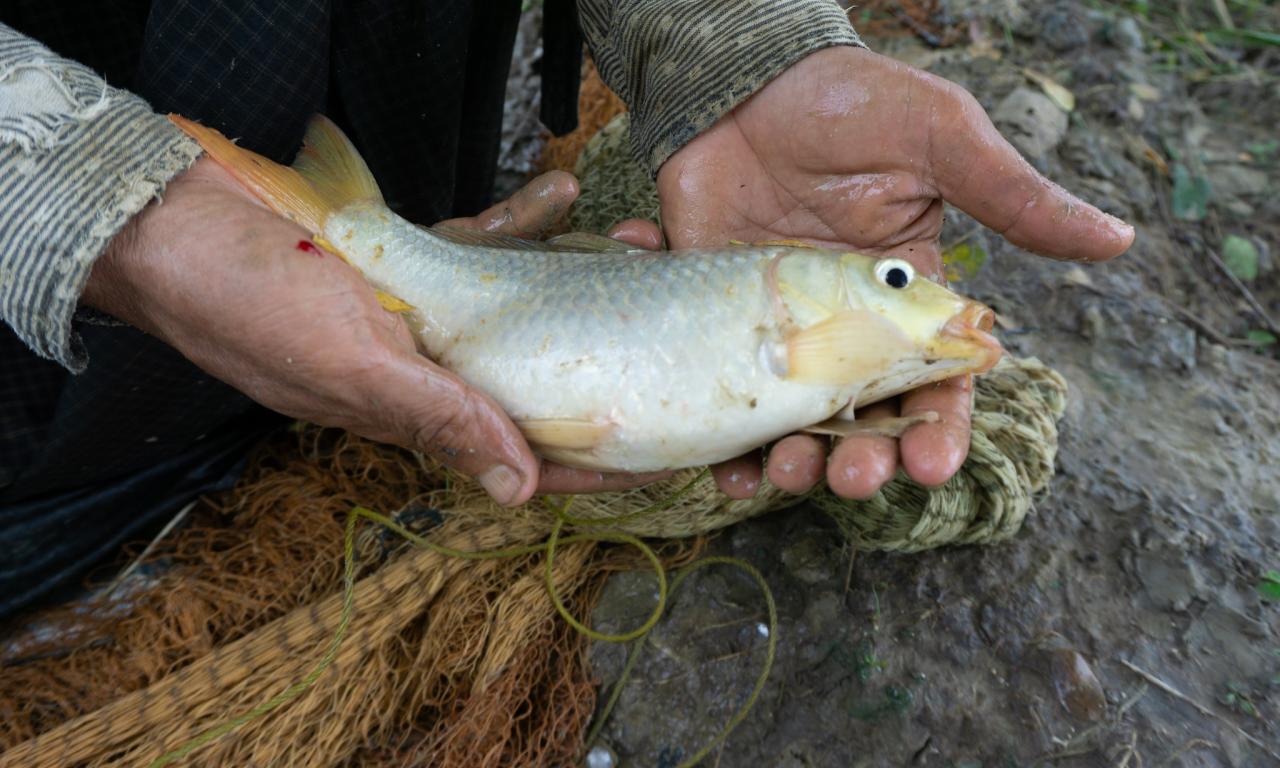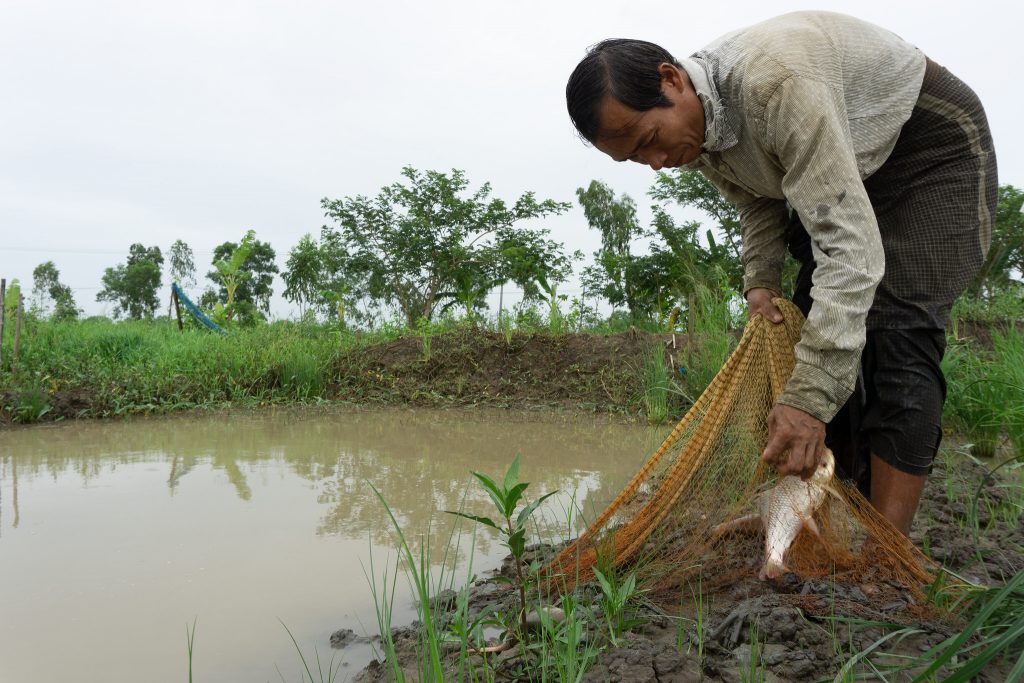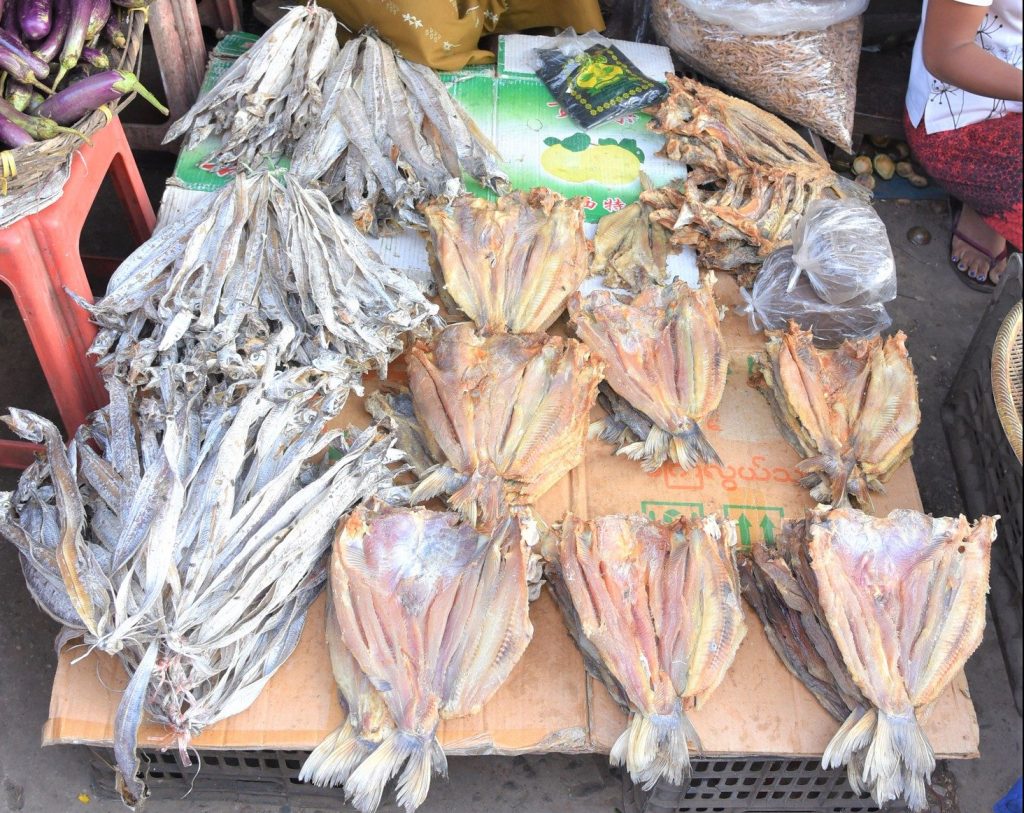
Small-scale aquaculture is a vital source of food and income in Myanmar. At present, it accounts for 20 percent of fish consumed, however, researchers believe with better practices it could contribute much more.
Modest improvements to the productivity of smallholder ponds in the Central Dry Zone can have large impacts on the profitability of aquaculture farmers, a new study has found.
Promoting smallholder adoption of integrated fish, fruit and vegetable pond management practices can build resilience, productivity and prosperity for farmers surveyed in three villages in the Shwebo Township, said the paper’s author Georgi Chertkov, a Master's student from Hohenheim University.
Shwebo Township, about 80 km northwest of Mandalay City, is in the Central Dry Zone of Myanmar. It is characterized by its arid weather with lower rainfall than the rest of the country. The region is increasingly vulnerable to erratic weather brought on by climate change. Inadequate water supply means aquaculture often suffers as water is prioritized for land crops and staple rice production.
“Key challenges to improving the productivity of aquaculture for farmers surveyed are access to water, use of fish feed, and issues related to pond construction,” said Chertkov. “Based on data collected from surveyed farmers we see small changes in practices can make improvement to livelihoods.”
The farming of aquatic foods in Myanmar relies on unimproved indigenous fish species often showing poor growth rates and higher fish mortality that tends to push up labor production. The survey results indicated aquaculture farmers predominantly reared rohu carp and other species in pond polyculture systems, with a diversity of fish and rearing techniques being used. Mostly, the observed polyculture practices were relatively simple and lacking in a consistent methodology.
Despite donor-funded training, farmers are slow to adopt improved pond management practices blaming insufficient time, knowledge and resources, explained Chertkov.
The study made recommendations in several key areas for positive impacts on integrated agriculture-aquaculture pond and labor productivity:
The use of improved feed should be encouraged in the study area. All farmers surveyed use rice bran as the main fish feed, with none opting for improved feed varieties.
“Even though several households had the financial means to invest in better feed, they chose not to do so,” explained the researcher. “Respondents indicated that problems with feeding are associated with the distance of the ponds from their homes, and feed costs.”
Improving the promotion and availability of improved feed for farmers in study areas would drive adoption that would see improvements in fish growth, he indicated.

Knowledge sharing and community-based organizations should be encouraged. Promoting information sharing between aquaculture farmers could lead to the adoption of productivity-enhancing practices in the Central Dry Zone, the study found.
“Most farmers said they would be happy to help their neighbors and friends in the village to improve their aquaculture practices, but none of the villages had a formalized aquaculture group that met regularly to help one another,” he said.
Training and information regarding pond construction should be improved. The study showed many respondents are interested in expanding their pond production, however, pond construction was observed to be problematic in the study area. Manual labor was commonly used to dig ponds, which could be improved with the use of machinery.
The creation of information materials on pond building best practices and support for their development is key to lifting the productivity of aquaculture, Chertkov explained.
Water access needs to be prioritized and given more attention by local administrators and organizations. Water access issues were a major hurdle for respondents in the study area. Respondents indicated that at present the Irrigation and Water Utilization Management Department prioritizes agriculture and rice production, and often ignores the water scarcity issues of aquaculture farmers.

Value-added processing of fish should be encouraged in the study area. None of the respondents indicated any value-added processing of their fish.
“Doing so could be advantageous for farmers, as it would allow them to generate additional income, and potentially sell their fish when market demand is stronger corresponding to higher prices and more income,” he said.
Fingerling production should be encouraged. It was observed that fingerling -- juvenile fish -- producers generate substantially more profit than grow-out farmers. Several sources indicated that the aquaculture sector in Shwebo Township has much potential for future growth. Encouraging small-holder aquaculture farmers to become fingerling producers makes sense given the likely increased future demand for fingerling production.
Fingerling production is underdeveloped in Myanmar, with a small number of hatcheries operating at a limited technological level. As of 2016, there were 26 active government hatcheries, producing about 644 million fish fingerlings.
Promoting multipurpose integrated pond systems that can be used for washing, drinking water for livestock, watering fruit and vegetables grown on pond banks integrated with fish have shown to improve resilience and self-sufficiency, Don Griffiths, Team Leader of WorldFish’s Myanmar Sustainable Aquaculture Programme - Inland (MYSAP Inland).
“Encouraging farmers in the region to try and adopt practices of integrated multi-purpose ponds will make farmers more self-sufficient and enables them to respond and recover to shocks such as the negative impacts of COVID-19,” said Griffiths.
MYSAP Inland has been working intensively with strategic hatcheries, smallholder fish grow-out farmers, and fish processors and vendors to improve fish value chains in the Central Dry Zone and upper regions of Myanmar, since April 2017.
Acknowledgments
Myanmar Sustainable Aquaculture Program (MYSAP) is funded by the European Union (EU) and the German Federal Ministry for Economic Development and Cooperation (BMZ) and implemented by Deutsche Gesellschaft für Internationale Zusammenarbeit (GIZ) GmbH. WorldFish is realizing the inland component of MYSAP under a GIZ grant agreement.
Related blogs
MYSAP Inland supports small-scale fish farmers and fish processors during COVID-19